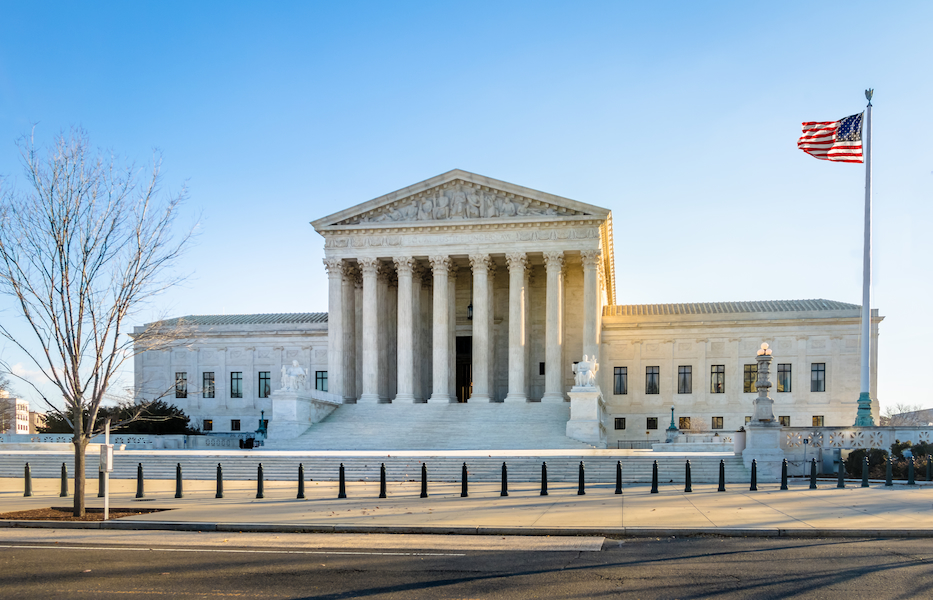Swift v Tyson Authorizes Federal Courts to Create Federal “Common” Law
HistoricalIn Swift v Tyson, 41 U.S. 1 (1842), the U.S. Supreme Court held that the federal courts were authorized to create their own body of common law when hearing cases based on diversity jurisdiction and were not bound by the decisions of the state courts in which the suit arose. The Court’s decision was overruled in Erie Railroad Co. v. Tompkins, 304 U.S. 64 (1938).
The Facts of Swift v Tyson
Plaintiff John Swift sued George Tyson in a New York federal district court to enforce a bill of exchange. The issue in the diversity jurisdiction case became whether the federal court was bound to apply New York common law or whether it was entitled to make an independent determination regarding what the common law should be.
To answer that question, the Supreme Court was asked to interpret Section 34 of the Judiciary Act of 1789. It provided that “the laws of the several states, except where the constitution, treaties or statutes of the United States shall otherwise require or provide, shall be regarded as rules of decision in trials at common law in the courts of the United States where they apply.”
The Court’s Decision in Swift v Tyson
The Supreme Court held that Section 34 of the Judiciary Act did not prohibit federal courts from deriving their “own” common law when deciding diversity of citizenship cases. Justice Joseph Story wrote on behalf of the unanimous Court.
According to the Court, Section 34 was limited to “state laws strictly local, that is to say, to the positive statutes of the state, and the construction thereof adopted by the local tribunals, and to rights and titles to things having a permanent locality, such as the rights and titles to real estate, and other matters immovable and intraterritorial in their nature and character.” Accordingly, it did not extend to contracts or other commercial instruments, “the true interpretation and effect whereof are to be sought not in the decisions of the local tribunals, but in the general principles and doctrines of commercial jurisprudence.”
With regard to issues of “general jurisprudence” or “commercial law,” the Court held that the federal courts were not bound by the decisions of the state courts, but rather were free to ascertain and declare the common law independently, “upon general reasoning and legal analogies,” even if their decisions directly contradicted relevant state decisions.
Unfortunately, the decision did not lead to the creation of a uniform body of federal commercial law, but rather more forum-shopping by litigants. When the Supreme Court had the opportunity to consider the issue again, it overturned Swift. As Justice Louis Brandeis observed, “In attempting to promote uniformity of law throughout the United States, the doctrine had prevented uniformity in the administration of the law of the state.”
In Erie, the Supreme Court abolished federal common law. It held that federal district courts in diversity jurisdiction cases must apply the law of the states in which they sit, including the judicial doctrine of the state’s highest court, where it does not conflict with federal law.
Previous Articles
SCOTUS Wraps Up Oral Arguments for the Term
by DONALD SCARINCI on May 17, 2022
The U.S. Supreme Court has concluded its oral arguments for the October 2021 Term. The justices hea...
SCOTUS Rules Censure of Elected Board Member Didn’t Violate First Amendment
by DONALD SCARINCI on May 10, 2022
In Houston Community College System v. Wilson, 595 U.S. ____ (2022), the U.S. Supreme Court held th...
Supreme Court Breach Is Not the First Involving Roe v. Wade
by DONALD SCARINCI on
The recent disclosure of Justice Samuel Alito’s decision purporting to overturn Roe v. Wade is ar...
The Amendments
-
Amendment1
- Establishment ClauseFree Exercise Clause
- Freedom of Speech
- Freedoms of Press
- Freedom of Assembly, and Petitition
-
Amendment2
- The Right to Bear Arms
-
Amendment4
- Unreasonable Searches and Seizures
-
Amendment5
- Due Process
- Eminent Domain
- Rights of Criminal Defendants
Preamble to the Bill of Rights
Congress of the United States begun and held at the City of New-York, on Wednesday the fourth of March, one thousand seven hundred and eighty nine.
THE Conventions of a number of the States, having at the time of their adopting the Constitution, expressed a desire, in order to prevent misconstruction or abuse of its powers, that further declaratory and restrictive clauses should be added: And as extending the ground of public confidence in the Government, will best ensure the beneficent ends of its institution.




